- Home
- About Us
- TSPT Academy
- Online Courses
-
Resources
- Newsletter
- Business Minded Sports Physio Podcast
- Day in the Life of a Sports PT
- Residency Corner
-
Special Tests
>
-
Cervical Spine
>
- Alar Ligament Test
- Bakody's Sign
- Cervical Distraction Test
- Cervical Rotation Lateral Flexion Test
- Craniocervical Flexion Test (CCFT)
- Deep Neck Flexor Endurance Test
- Posterior-Anterior Segmental Mobility
- Segmental Mobility
- Sharp-Purser Test
- Spurling's Maneuver
- Transverse Ligament Test
- ULNT - Median
- ULNT - Radial
- ULNT - Ulnar
- Vertebral Artery Test
- Thoracic Spine >
-
Lumbar Spine/Sacroiliac Joint
>
- Active Sit-Up Test
- Alternate Gillet Test
- Crossed Straight Leg Raise Test
- Extensor Endurance Test
- FABER Test
- Fortin's Sign
- Gaenslen Test
- Gillet Test
- Gower's Sign
- Lumbar Quadrant Test
- POSH Test
- Posteroanterior Mobility
- Prone Knee Bend Test
- Prone Instability Test
- Resisted Abduction Test
- Sacral Clearing Test
- Seated Forward Flexion Test
- SIJ Compression/Distraction Test
- Slump Test
- Sphinx Test
- Spine Rotators & Multifidus Test
- Squish Test
- Standing Forward Flexion Test
- Straight Leg Raise Test
- Supine to Long Sit Test
-
Shoulder
>
- Active Compression Test
- Anterior Apprehension
- Biceps Load Test II
- Drop Arm Sign
- External Rotation Lag Sign
- Hawkins-Kennedy Impingement Sign
- Horizontal Adduction Test
- Internal Rotation Lag Sign
- Jobe Test
- Ludington's Test
- Neer Test
- Painful Arc Sign
- Pronated Load Test
- Resisted Supination External Rotation Test
- Speed's Test
- Posterior Apprehension
- Sulcus Sign
- Thoracic Outlet Tests >
- Yergason's Test
- Elbow >
- Wrist/Hand >
- Hip >
- Knee >
- Foot/Ankle >
-
Cervical Spine
>
- I want Financial Freedom
- I want Professional Growth
- I want Clinical Mastery
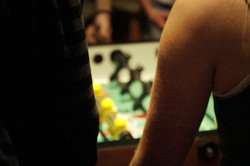 Mike Reinold recently had a post about the sleeper stretch - a stretch that is commonly prescribed to increase glenohumeral internal rotation ROM. Mike discusses how the sleeper stretch actually is more likely to stretch the posterior capsule. With the frequency instability is seen in the clinic, increasing that instability with capsular stretching should not be a goal of ours. In fact, if you take a step back you might realize that the sleeper stretch looks very similar to the Hawkins-Kennedy Impingement test (just on it's side). Any time an exercise is the same motion as a provocative test, we should rethink the reasoning behind that exercise, especially with how overly aggressive patients can be with this particular exercise. Finally, Mike also discusses the instances where the sleeper stretch may actually be appropriate (young athletes that don't have anyone to stretch them and people that truly have posterior capsule tightness) and provides a video/explanation of how to properly perform the motion, along with alternatives to the exercises. Check it out!
3 Comments
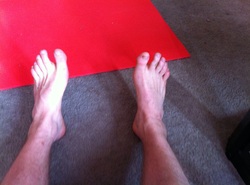 Ankle Dorsiflexion: The What, Why, and How is a recent post from Adam Kelly, ATC at www.eatrunrehabiliate.com. I like this post for a number of reasons: First, I recently had an ankle sprain myself and like a true physical therapist, failed to take the necessary and appropriate rehab measures. I am now dealing with the chronic side-effects of an ankles sprain and am constantly working on my ankle ROM and mechanics. Second, Adam does an excellent job reviewing the anatomy, kinesiology, and mechanics of the ankle. He incorporates the importance of assessing the whole lower chain as well identifying proximal and distal impairments in his patients. Third, he presents a case scenario explaining how deficits at the talocrural joint could affect the average person. Finally, Adam references other professional links and videos, allowing the reader to have a much more comprehensive understanding of evaluation and treatment of the ankle. Some take home points from the the post: 1) When a person lacks ankle mobility, you may not see an immediate decline in functional mobility. The human body has an amazing ability to compensate. It is our ability as practitioners to find these subtle substitutions. 2) When it comes to increasing ankle mobility with manual interventions, a multi-faceted approach is important. We must be dynamic during our treatment sessions. What is successful for one patient may not be appropriate for another patient with similar impairments. 3) Do not forget the above and below. Regional interdependence is so important. As competent clinicians, evaluating tibial torsions, hip mechanics, and mobility of the rearfoot and midfoot must all be considered as contributing impairments. Thanks for the post Adam! -Jim 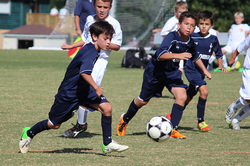 We do not frequently see patients until pain is an issue; however, that does not mean that everyone with pain-free motion is without dysfunctional movement. In fact, it's probably safe to say that most people without pain are lacking normal mobility/stability somewhere in their bodies. In Gray Cook's latest post, he discusses the adaptations our bodies make given certain activities in which we regularly engage and how we might not want to be so eager to correct these dysfunctional patterns. An example he uses is a common one: tight hamstrings in runners. He reasons that our bodies change to best perform the repetitive task. The body is used to functioning with limited hamstring length, and in a way, relies on those restrictions for stability. If we suddenly choose to alter that restriction, we open up the body to new motions and stresses for which it is not prepared. In the example of the runner, yes we want to stretch those tight hamstrings, but we must also include stability training in that new range! Check out Cook's post for more detail on the topic. 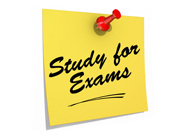 Studying for the NPTE can seem overwhelming and expensive. We ran across this website the other day that provides good content and sample examination questions to help make this process a easier: www.physicaltherapyexamprep.com. Check it out!
So how do we address these differences? Shirley Sahrmann discussed this topic in a lecture that we highly recommend listening to. Instead of focusing on the side with increased stiffness, we should address the side with decreased stiffness. Strength training has been found to increase muscle stiffness (Magnusson, 1998). By bringing both sides of the body to symmetry (equal stiffness), an equal distribution of forces prevents any abnormal stresses on the body. Stretching still has its place, of course, but we must be sure to distinguish between muscle stiffness and adaptive shortening when choosing to apply the intervention. Next time you're measuring muscle length, check for stiffness and muscle length! References:
Magnusson SP. (1998). Passive properties of human skeletal muscle during stretch maneuvers. A review. Scand J Med Sci Sports. 1998 Apr;8(2):65-77. Web. 10 June 2013. Mizuno T, Matsumoto M, Umemura Y. (2013). Decrements in Stiffness are Restored within 10 min. Int J Sports Med. 2013 Jun;34(6):484-90. Web. 10 June 2013. Mizuno T, Matsumoto M, Umemura Y. (2013). Viscoelasticity of the muscle-tendon unit is returned more rapidly than range of motion after stretching. Scand J Med Sci Sports. 2013 Feb;23(1):23-30. Web. 10 June 2013. 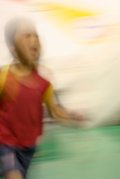 As new graduates and professionals in the field of physical therapy, we are often asked what specialty degrees we plan on earning after graduation: manual therapy certifications, dry needling, active release, or whatever the current coolest technique on the block might be. While we are excited to learn these techniques and add fancy interventions to our PT toolbox, we must remember what is at the core of our treatment sessions: Movement. In this recent blog post by Allan Besselink, he does an excellent job reminding us of this concept. The following quote should give you a glimpse of what he is talking about: "Our profession has ignored that which makes us unique in the spectrum of health and health care. We are a movement profession. We are the experts in exercise prescription, in restoring function, and in enhancing performance. No other profession – including physicians, chiropractors, massage therapists, you name it – knows movement and function like we do." While specialty certifications serve their purpose, they are blurring the image of what we do best. We hold a unique position in the healthcare market and need to capitalize on this potential before it is too late. We all need to demonstrate and practice the same passion as Allan for unifying our profession if we ever expect to become more autonomous.  Check out this recent post on the AAOMPT Student Special Interest Group. In it you hear from several experienced clinicians, regarding the development of their clinical reasoning. As new grads or students, this is usually something we only gain through experience or any mentoring chance that happens to fall into our laps. Take the opportunity to hear the advice of these practitioners! |
Dr. Brian Schwabe's NEW Book in partner with PaleoHacks!
Learn residency-level content on our
Insider Access pages We value quality PT education & CEU's. Click the MedBridge logo below for TSPT savings!Archives
July 2019
Categories
All
|


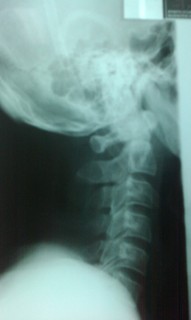
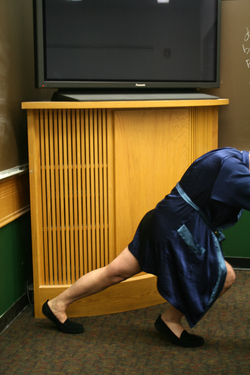




 RSS Feed
RSS Feed